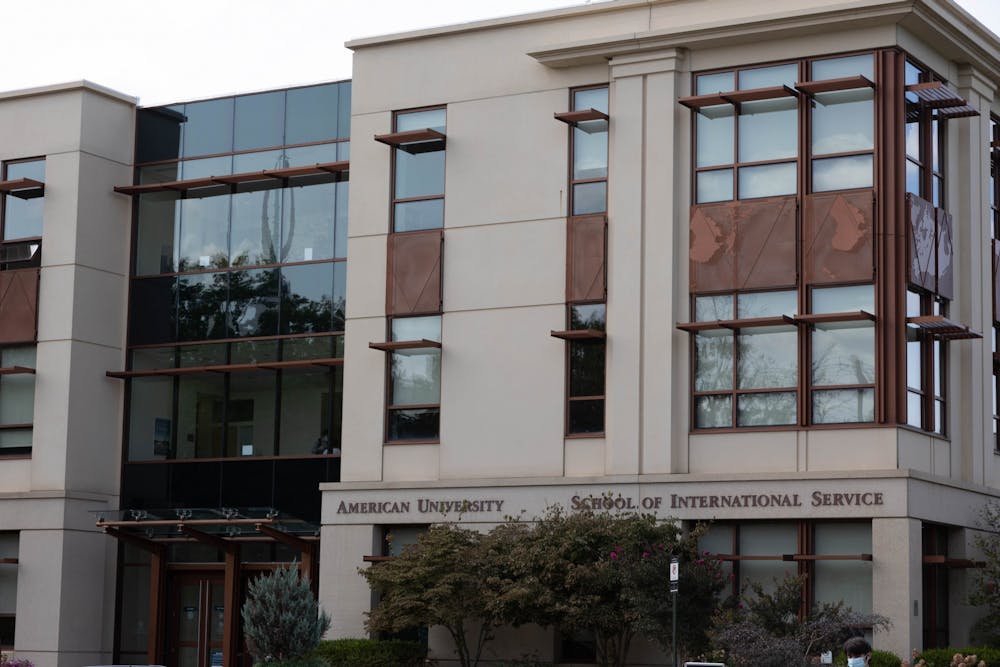Upon returning to campus for the fall semester, American University announced in a Sept. 1 webinar its plan to return to pre-pandemic cleaning levels.
According to the Centers for Disease Control and Prevention and the D.C. Department of Health, the risk of transmitting the coronavirus through surfaces is minimal. In the webinar, University officials explained that faculty and staff are responsible for cleaning their desks, and students have the option to do so as well.
“We’ve learned a lot since March of 2020 about how this is actually transmitted and what the protocol should be focused on,” said Dan Nichols, assistant vice president for risk safety and transportation programs, in the webinar. “We are still doing cleaning on high-touch surfaces like doorknobs and building handles or the handles to exterior building doors, things of that nature, but the regular classroom has returned to normal cleaning.”
Despite the University following CDC guidance on surface cleaning, some students said they don’t feel that the University is doing enough to keep classrooms clean. Sophomore Adrianna Milice said she feels a lot of anxiety surrounding classroom safety, and thinks that the University could be doing more to keep students healthy.
“As a desk receptionist, they tell you to clean the desk before and after your shift,” Milice said. “Maybe if they required every professor, maybe every class … before you leave the classroom, [to] wipe down the table if you can.”
Standards for air quality in University buildings have been raised as part of the new cleaning plan. University buildings are equipped with upgraded HVAC filters, which cleaning staff change more frequently than they have in the past, according to AU’s Health and Safety Plan. The University also increased outside airflow to buildings, in accordance with CDC guidelines, Nichols said. The University didn’t specify how frequently the filters will be changed.
While classroom cleaning procedures have not changed, students are still required to wear face coverings inside, and eating is not permitted in any classroom, according to AU’s Health and Safety Plan. These precautions line up with CDC guidelines. Outside of classrooms, procedures vary.
School of Education junior Sebastian Aguilar said he is generally satisfied with campus cleaning procedures and believes that what the University is doing is working. He said that everyone wears their masks in class and that hand sanitizer is usually made available, which adds to his comfort level.
Students’ ability to distance varies depending on the class and school.
“I have a lot smaller class sizes than a Kogod major might have, so it’s very easy to be like spread apart in a classroom and everyone’s wearing a mask, no argument there, so I generally feel pretty safe,” Aguilar said.
Beyond the University’s specific plan, professors have been communicating guidelines for their students within the classroom, as information about the cleaning was often not apparent to students.
“It was really on a communication from each teacher basically being like, ‘this is how we’re operating the classroom, this is the procedure,’ but from a University standpoint I would say, nope, didn’t hear a lick,” Aguilar said.
Sarah Irvine Belson, a professor in the School of Education, said that she makes sure to have students wipe down markers when they’re sharing, and keeps wipes available to students.
“I was encouraged by my department administrator to pick up some cleaning materials and also to bring extra masks to class, but I haven’t needed the extra masks,” Belson said.
While University policy does not seem to be a huge concern, lack of communication from the University remains an issue. “I think they’re doing things well … I would suggest that communicating with faculty about expectations I think would be better,” Belson said. “There was [my] department and the administrators said ‘here’s some cleaning materials’ but I don’t think that we’re getting consistent comments.”
Julie Sara Boyd, assistant dean of academic administration in the School of Education said that given how often CDC guidance has changed because of new information, the University has done the best they can with communication.
“It’s everyone's job to keep the classrooms clean … whether it’s cleaning up after yourself like a normal classroom or staying home when you’re not feeling well,” Boyd said. “That to me is cleanliness, so I think the University can do what they can communication-wise but we all have to use our common sense … to make the classroom community safe and clean.”
In the University’s coronavirus testing locations, cleaning procedures are far more advanced. The University has an environmental cleaning service that focuses on testing locations. This service has far higher standards of cleaning, as there is more risk in a testing location than in a class, according to Nichols.
Editor's note: The subheading of this story has been updated.





